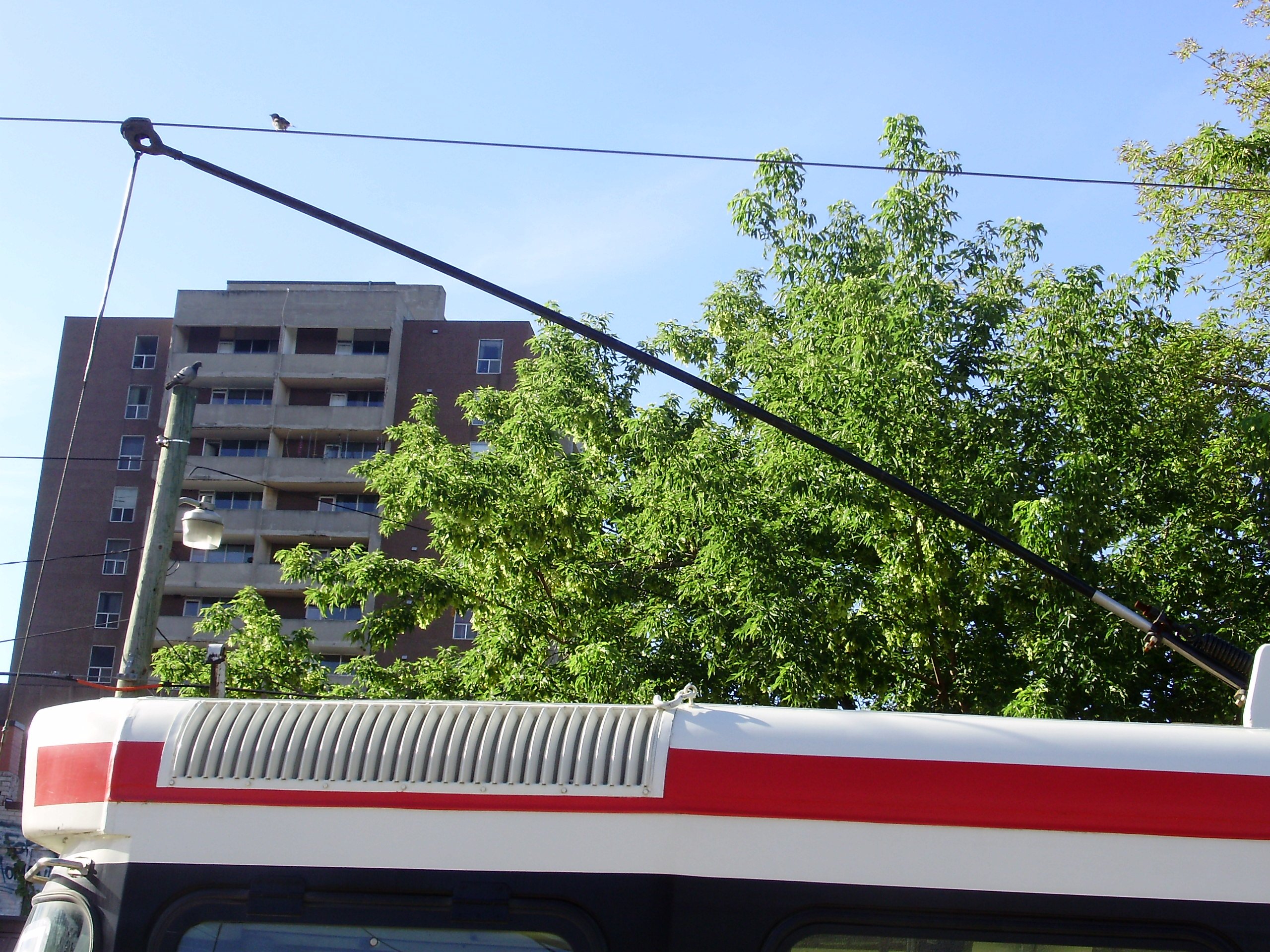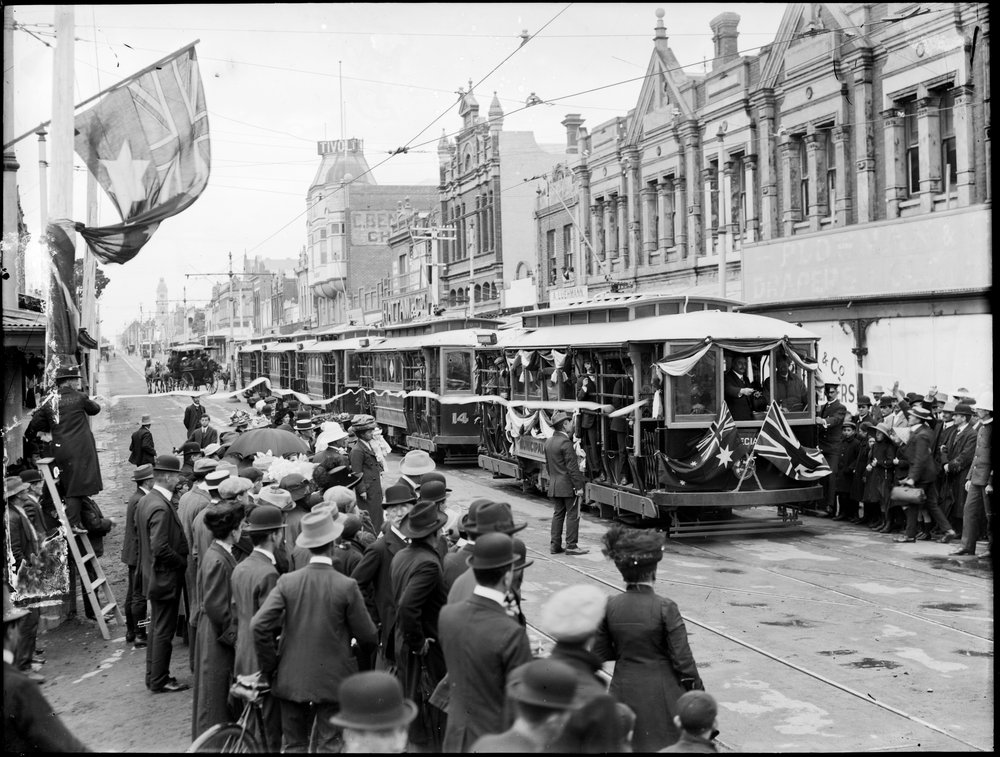|
B-class Melbourne Tram (first)
The B-class was a class of 12 trams built by James & Moore & Sons for the Prahran & Malvern Tramways Trust (PMTT). Numbered 21-24 and 84–91, the former four taking numbers vacated when O class trams were sold to the Hawthorn Tramways Trust in 1916. All passed to the Melbourne & Metropolitan Tramways Board The Melbourne & Metropolitan Tramways Board (MMTB) was a government-owned authority that was responsible for the tram network in Melbourne, Australia between 1919 and 1983, when it was merged into the Metropolitan Transit Authority. It had be ... on 2 February 1920 when it took over the PMTT, becoming the B-class and retaining their running numbers. Four were sold for further use in 1931 on the Bendigo network. Vicsig References {{MelbourneTramNavbox, state=collapsed[...More Info...] [...Related Items...] OR: [Wikipedia] [Google] [Baidu] |
B-class Melbourne Tram
B class may refer to: Ships * B-class corvette of the Turkish Navy * B-class destroyer, launched in 1930 for the British Royal Navy * B-class destroyer (1913), British torpedo boat destroyers * B-class lifeboat, British lifeboats * B-class submarine (other), several types Rail transport * B-class Melbourne tram, an Australian tram * DHR B Class, built for the Darjeeling Himalayan Railway in India * NBR B class, a British steam locomotive * NZR B class (1874), a steam locomotive of the New Zealand Railways Department * NZR B class (1899), a steam locomotive of the New Zealand Railways Department * CIÉ 101 Class, an Irish diesel locomotive * CIÉ 113 Class, an Irish diesel locomotive * LCDR B class, a British steam locomotive * MRWA B class, a British steam locomotive * Victorian Railways B class (1861), an Australian steam locomotive * Victorian Railways B class (diesel), an Australian diesel locomotive * WAGR B class, an Australian steam locomotive ... [...More Info...] [...Related Items...] OR: [Wikipedia] [Google] [Baidu] |
South Melbourne
South Melbourne is an inner suburb in Melbourne, Victoria, Australia, south of Melbourne's Central Business District, located within the City of Port Phillip local government area. South Melbourne recorded a population of 11,548 at the 2021 census. Historically known as Emerald Hill, South Melbourne was one of the first of Melbourne's suburbs to adopt full municipal status and is one of Melbourne's oldest suburban areas, notable for its well preserved Victorian era streetscapes. The current boundaries are complex. Starting at the east end of Dorcas Street, it runs along the rear of properties on St Kilda Road, then south along Albert Road, north up Canterbury Road, along the rear of the north side of St Vincent Place, zigzags west along St Vincent Street, then north up Pickles Street. There is then an arm of former industrial land to the west between Boundary Road, the freeway and Ferrars Street. It then runs along Market Street to Kingsway, then up Dorcas Street to St Kild ... [...More Info...] [...Related Items...] OR: [Wikipedia] [Google] [Baidu] |
Trolley Pole
A trolley pole is a tapered cylindrical pole of wood or metal, used to transfer electricity from a "live" (electrified) overhead line, overhead wire to the control and the electric traction motors of a tram or trolley bus. It is a type of current collector. The use of overhead wire in a system of current collection is reputed to be the 1880 invention of Frank J. Sprague, but the first working trolley pole was developed and demonstrated by Charles Joseph Van Depoele, Charles Van Depoele, in autumn 1885.William D. Middleton, Middleton, William D. (1967). ''The Time of the Trolley'', pp. 63–65, 67. Milwaukee: Kalmbach Publishing. . History An early development of an experimental tramway in Toronto, Ontario, was built in 1883, having been developed by John Joseph Wright (inventor), John Joseph Wright, brother of swindler Whitaker Wright. While Wright may have assisted in the installation of electric railways at the Canadian National Exhibition (CNE), and may even have used a pol ... [...More Info...] [...Related Items...] OR: [Wikipedia] [Google] [Baidu] |
JG Brill Company
The J. G. Brill Company manufactured tram, streetcars,Young, Andrew D. (1997). ''Veteran & Vintage Transit'', p. 101. St. Louis: Archway Publishing. interurban coaches, motor buses, trolleybuses and passenger car (rail), railroad cars in the United States for nearly 90 years, hence the longest-lasting trolley and interurban manufacturer. At its height, Brill was the largest manufacturer of streetcars and Interurban, interurban cars in the US and produced more streetcars, interurbans and Doodlebug (rail car), gas-electric cars than any other manufacturer, building more than 45,000 streetcars alone. The company was founded by John George Brill in 1868 in Philadelphia, as a horsecar manufacturing firm. Its large factory complex was located in southwest Philadelphia at 62nd St and Woodland Avenue, adjacent to the Baltimore and Ohio Railroad tracks. At its peak of operation, it was one of Philadelphias's largest employers. Over the years, it absorbed numerous other manufacture ... [...More Info...] [...Related Items...] OR: [Wikipedia] [Google] [Baidu] |
Prahran & Malvern Tramways Trust
The Prahran and Malvern Tramways Trust (PMTT) was a former tram operator in Melbourne, Australia. The trust was formed in 1907, with its first line operating in 1910. Its functions were taken over by the Melbourne & Metropolitan Tramways Board in 1920. History The PMTT was formed under the ''Prahran & Malvern Tramways Trust Act 1907'' to construct and operate electric trams in the municipalities of City of Prahran, Prahran and City of Malvern, Malvern. The original members of the trust were Alexander Cameron (tramways administrator), Alexander Cameron (Chairman), W. O. Strangward (Secretary), H.S. Dix (Manager and Engineer), S. Bangs, William Knox (Victorian politician), William Knox Victorian Legislative Council, MLC, Walter Lewis and Thomas Luxton. Noyes Brothers were selected as the primary contractors for the work. The first rail was laid along High Street on 20 October 1909. Malvern tram depot opened on 30 May 1910 as were the first lines: along High Street from Charles Stre ... [...More Info...] [...Related Items...] OR: [Wikipedia] [Google] [Baidu] |
O-class Melbourne Tram
The O-class Melbourne tram were a group of four trams built in 1912 by Duncan & Fraser (Adelaide) for the Prahran & Malvern Tramways Trust (P&MTT) upon the recommendation of W. G. T. Goodman, Chief Engineer and General manager of the Adelaide tramways. They were allocated P&MTT fleet numbers 21 to 24. At the time of their introduction, they were by far the largest street-vehicles in Melbourne, and earned the nicknames ''Zeppelins'' and '' Dreadnoughts''. Proving to be less than satisfactory in service, they were later sold to the Hawthorn Tramways Trust (HTT) in August 1916 as "surplus to requirements", however P&MTT soon ordered replacement tramcars. Coincidentally they retained their fleet numbers (21 to 24) whilst at Hawthorn. All passed to the Melbourne & Metropolitan Tramways Board (M&MTB) on 2 February 1920, when that body took-over the HTT. Originally known as 'Metropolitan Cars', they were classified as O-class and renumbered 127 to 130 circa 1922. The O-class were the la ... [...More Info...] [...Related Items...] OR: [Wikipedia] [Google] [Baidu] |
Hawthorn Tramways Trust
The Hawthorn Tramways Trust was a tram operator in Melbourne, Australia. Its assets and liabilities were transferred to the Melbourne & Metropolitan Tramways Board on 2 February 1920. History The Hawthorn Tramways Trust (HTT) was formed pursuant to the ''Melbourne to Burwood Tramways Act, 1914'', to construct and manage electric tramways within the cities of Melbourne, Richmond, Hawthorn, and Camberwell, and to acquire a horse tramway from the Melbourne Tramway & Omnibus Company (MTOC). The Trust operated the Hawthorn tram depot and was also responsible for the acquisition of Wattle Park in the suburb of Burwood in 1916. The HTT was the only early electric tram operator to open a route into the central business district (CBD), although it and the inner suburbs were well served at that time by the extensive Melbourne cable tramway system. The main route was from Princes Bridge to Burwood, with a branch line to Wattle Park. The Trust also took over the MTOC's Hawthorn horse ... [...More Info...] [...Related Items...] OR: [Wikipedia] [Google] [Baidu] |
Melbourne & Metropolitan Tramways Board
The Melbourne & Metropolitan Tramways Board (MMTB) was a government-owned authority that was responsible for the tram network in Melbourne, Australia between 1919 and 1983, when it was merged into the Metropolitan Transit Authority. It had been formed by the merger of a number of smaller tramway trusts and companies that operated throughout the city. History In 1869 Francis Boardman Clapp set up the Melbourne Omnibus Company (MOC) which ran horse-drawn omnibuses in the inner suburbs of Melbourne. The company carried five million passengers. By 1882 the company had over 1,600 horses and 178 omnibuses. In 1885 the company carried 11.7 million passengers. In 1885 Clapp's MOC was granted a 30-year exclusive franchise for a cable tram network in Melbourne, with no competing lines being permitted. Clapp reorganised the company as the Melbourne Tramway & Omnibus Company (MTOC). A total of 15 lines were built, opening progressively between 1885 and 1919. The first serious ele ... [...More Info...] [...Related Items...] OR: [Wikipedia] [Google] [Baidu] |
Trams In Bendigo
Trams in Bendigo, Victoria, Bendigo have operated since 1890. They ceased to operate as a means of public transport in 1972 but part of the main network continues to operate today as a tourist attraction. Limited trials have also been made in 2009 with operating commuter service, but with minimal usage by the public. History As public transport The first trams in Bendigo were battery (electricity), battery operated, but only lasted three months before being withdrawn due to their unreliability. A steam tram system commenced operation in 1892 operated by the Bendigo Tramways Company Limited, and lasted until 1902. Electric trams commenced in 1903 operated by the Electric Supply Company of Victoria, the network eventually covering two routes, one north-south from North Bendigo, Victoria, North Bendigo through the city centre to Golden Square, Victoria, Golden Square, and Eaglehawk, Victoria, Eaglehawk through the city centre to Quarry Hill, Victoria, Quarry Hill. The Electric Su ... [...More Info...] [...Related Items...] OR: [Wikipedia] [Google] [Baidu] |



